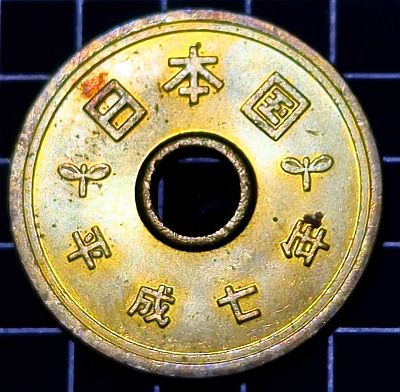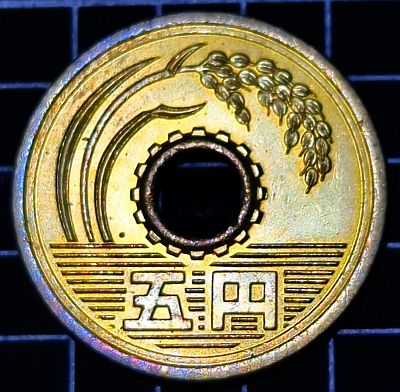An elegant, modern Japanese coin
Heisei Era
Last time we visited Japan, we looked at the 1915 Japan 5 Rin. That coin was issued during the Taishō era which lasted until 1926. Each emperor of Japan names the era of their reign. Here is a list of these since the “Meiji Restoration“:
- Meiji: Emperor Mutsuhito, 1867-1912
- Taisho: Emperor Yoshihito 1912-1926. Taisho means “Great Righteousness”.
- Shōwa: Emperor Hirohito, 1926-1989. Shōwa means “Enlightened Peace” from the Chinese Book of Documents
- Heisei: Emperor Akihito, 1989-2019. Means “Peace, everywhere”
- Reiwa: Emperor Naruhito, 2019 – Current. Means “auspicious harmony” and “order and peace”.
Today’s coin is from the reign of Emperor Akihito, during the Heisei period. Japan of the 1990s was a fully modern country, however it did face a period of slow to negative economic growth. The period from the 1990s was known as the Lost Decade, or sometimes decades, depending on how long you include in the definition. During this period, Japan’s economic stagnation became one of the longest-running economic crises in its recorded history.
The coin itself, however, was first issued in 1949. Aside from a slight change in font in 1958, the coin has been identical since then aside from the era name and year on the obverse. There have been 4 versions of this 5 Yen coin since 1949.
Obverse

Above the hole is 日本国, which means “State of Japan”. There is a seed leaf either side of the hole. Below the hole is the year and era. In this case, 平成七年, which means Year 5 of Heisei. Rather than having “1995” the coin notes that this is the fifth year of the Heisei era. This type of numbering years is known as “Regnal years“. Regnal years have been used since ancient times in cultures across the planet. Japan uses both Regnal years and the Gregorian calendar depending on context.
Reverse

Large bending stalk of rice representing agriculture on top, water with value at the bottom representing fisheries, and teeth of a cog around the central hole representing industry.
The lettering at the bottom reads: 五円, which means “five yen”. The earlier piece on the 5 Rin coin covered counting and numbers in Japan.


Leave a Reply